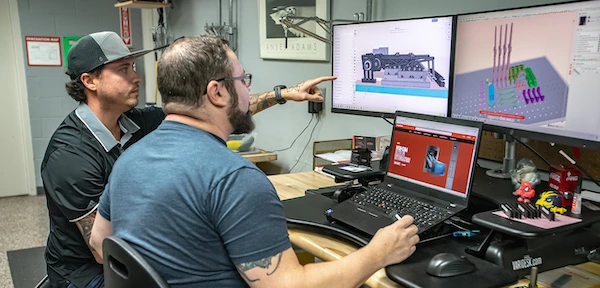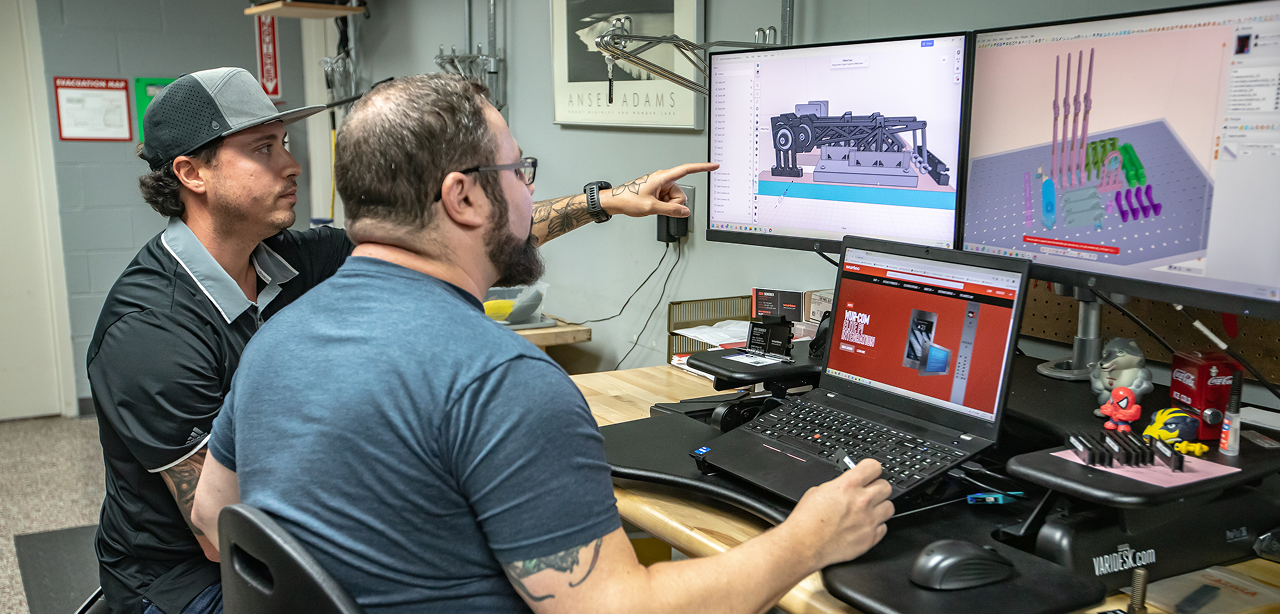From Static to Interactive

Modernize How Cross-Functional Teams Align
In product development, no team works in isolation. Design, engineering, and manufacturing all rely on one another to move ideas from concept to production. But while the need for alignment is obvious, the path to achieving it often isn’t.
Cross-functional teams frequently struggle to stay aligned, especially when reviewing complex 3D models and making decisions that affect cost, tooling, and production timelines. What should be a straightforward collaboration often turns into a fragmented, time-consuming loop of meetings, markups, screenshots, and static feedback passed between disconnected tools.
The result? Momentum stalls. Not because the problem is too complex, but because the process is.

Where cross-team workflows break down
These structural problems become especially visible during product model reviews, when teams try to evaluate whether a design can be built.
A design team hands off a model. Engineering flags feasibility issues: missing clearances, interference risks, inaccessible hardware, or welds. But instead of quickly resolving them, teams end up stuck in a familiar loop:
- Meetings are scheduled
- Screens are shared
- Screenshots are marked up
- Static images are annotated in tools like Photoshop
- Feedback circulates across emails and PDFs
Every team adds input through different channels, with varying levels of context and clarity.
The result? Slow decisions, avoidable miscommunication, and mounting frustration—not because the issue is too complex, but because the process is too fragmented.
Interact with the model, act immediately, and leave review meetings with consensus
Shapr3D enables design, engineering, and manufacturing teams to work together directly in the model, not around it. Teams can inspect geometry, measure critical features, test solutions, and communicate clearly, all within one shared and interactive 3D environment.
This hands-on, visual workflow helps teams align faster and with fewer misunderstandings. Everyone sees the same thing, interacts with the same data, and contributes in context, which means decisions are grounded in clarity, not guesswork. Feedback becomes action immediately, so teams can leave the review aligned.

Here’s how:
1. Open models from any major CAD system
Import native file formats from NX, SolidWorks, Creo, and other CAD systems directly into Shapr3D, so you can skip the hassle of conversions, cleanup, and get to work right away.
Import STEP files from all major CAD platforms with zero cleanup or file conversion.
2. Explore internal geometry with Dynamic Section View
Use Dynamic Section View to cut through complex assemblies and examine internal features or hidden issues. You can rotate and translate the cutting plane in real time — no need to predefine section views or wait for model regeneration. It’s an immediate, flexible way to access and understand any part of the model.
3. Measure what matters
To support better decision-making, take accurate, contextual measurements directly on the model — including lengths, distances, and clearances — to quickly validate key dimensions. You can easily spot potential issues by visually inspecting fit and spacing during your review.
4. Stay focused during complex reviews
Quickly cut through the noise in complex assemblies with the new show/hide functionality. You can now toggle individual components, bodies, or groups directly in the Items list or by selecting them in the model. This makes it easy to isolate specific parts, so teams can focus on what’s relevant, avoid distractions, and have clearer, more productive design reviews.
5. Propose changes on the spot
Use direct modeling to push, pull, and reshape geometry in real time, helping teams quickly test alternatives or demonstrate intent. This means you can act on feedback immediately, without leaving the model.
6. Capture and share clear feedback
Save views and screenshots with annotations, sections, and dimensions visible. Give everyone downstream the full picture, not just another markup. These visuals capture actual model changes that have already been implemented and agreed upon, rather than static images with disconnected comments.
7. Validate on the shop floor with AR
Bring your design into the real world instantly with Augmented Reality. Use AR to overlay your model in its physical context — on the shop floor, on a machine, or in an assembly area — so teams can validate fit, scale, and function before anything gets made.
The result: Faster decisions, fewer follow-ups
If your team struggles with describing issues instead of solving them, it might be time to rethink your workflow.
With Shapr3D, everyone sees and works with the same up-to-date 3D model, including its dimensions, structure, and rationale behind design decisions. With everyone aligned in one space, teams understand each other faster, reduce misunderstandings, and make more confident decisions, accelerating the entire product development process.







